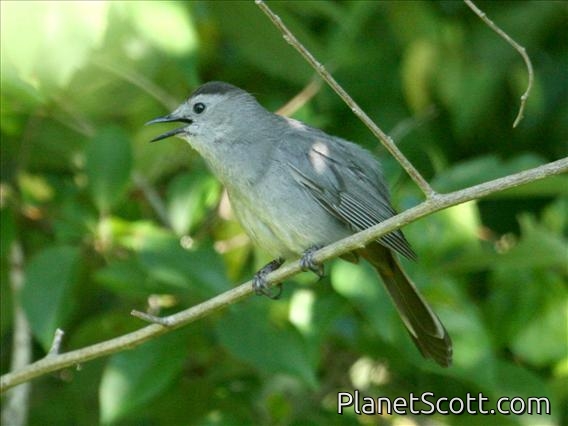Gray Catbird (Dumetella carolinensis)

Grey Catbird (Dumetella carolinensis)
×


Grey Catbird (Dumetella carolinensis)
About Gray Catbird (Dumetella carolinensis)
- Kingdom: Animals
- Phylum: Chordates
- Class: Birds
- Order: Perching Birds
- Family: Mockingbirds, Thrashers, and Allies
The gray catbird, also spelled grey catbird, is a medium-sized North American and Central American perching bird of the mimid family. It is the only member of the "catbird" genus Dumetella. Like the black catbird, it is among the basal lineages of the Mimidae, probably a closer relative of the Caribbean thrasher and trembler assemblage than of the mockingbirds and Toxostoma thrashers. In some areas it is known as the slate-colored mockingbird.
Source: Wikipedia
Visits
-
-
2007-06-14
Cape May National Wildlife Refuge - Deleware Bay, United States of AmericaNear headquarters -
2007-07-21
Hawthorne Hill Nature Center, United States of America -
2007-10-13
Xalapa, Macacuitepl Park, Mexico -
2008-07-13
Jamaica Bay National Wildlife Refuge, United States of America -
2009-01-14
Cozumel, Mexico -
2009-01-20
Crooked Tree, Belize -
2009-05-05
Elgin - Bluff Spring Fen, United States of America -
-
2012-07-09
Sax-Zim Bog, United States of America -
2013-04-16
Aransas NWR (CTC 037) (Aransas Co.), United States of America -
2013-04-17
Brazoria, United States of America -
2013-04-19
Bolivar Peninsula, United States of America -
-
-
-
-
-
-
-
-
-
-
-
-
-
-
-
-
-
-
-
-
-
-
-
-
-
-
-
-
-
-
-


